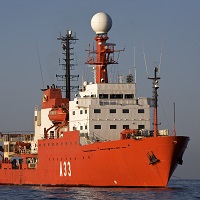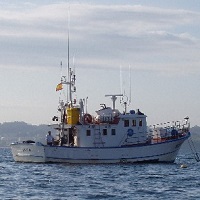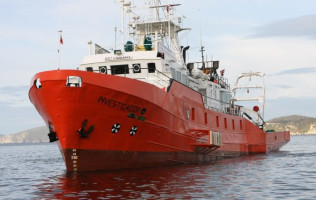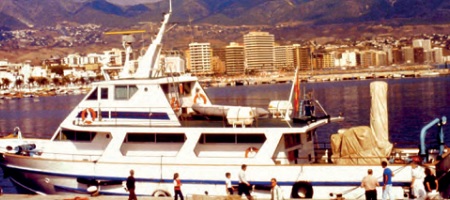Keyword
145
2139 record(s)
Type of resources
Categories
Topics
INSPIRE themes
Keywords
Contact for the resource
Provided by
Years
Formats
Status
-
Cr. CEE 90. Control of Phytoplankton Dominance. - ref 900911.0004
-

La creciente necesidad de informacion que requiere la evaluacion y gestion actuales de las especies explotadas, especialmente en el caso de la merluza, pero tambien en otros como los gallos, rapes o la cigala, hacen necesario obtener informacion independiente de las pesquerias sobre la situacion de estas poblaciones. Para lo cual se determino la realizacion de los siguientes objetivos:\nEstimacion de indices de abundancia estratificados por edad de merluza, rapes y gallos en las divisiones VIIbk.\nEstimacion de indices de abundancia estratificados de otras especies comerciales como la cigala, el mendo, las rayas o la brotola de fango.\nEstimacion de la fuerza de los reclutamientos y localizacion de las agregaciones de juveniles de merluza, rapes y gallos.\nDescripcion de los patrones de distribucion espacial de las especies demersales y bentonicas en el banco de Porcupine.\nObtencion de muestras de especies comerciales para estudios de niveles de contaminacion por arsenico y metales pesados.\nRecogida de muestras de especies para el estudio de la biologia de las principales especies comerciales en el area (otolitos, ilicios y otros).\nEstudio de la hidrografia (temperatura, salinidad y densidad de la columna de agua) del banco de Porcupine.\nMarcado de rapes para el estudio de sus migraciones y crecimiento.\nRecogida de ejemplares de jurel para estudios de genetica.
-

- Levantamientos hidrograficos sistematicos y exhaustivos que permitan el cartografiado total de sus fondos\n- Realizar exploraciones geofisicas que permitan determinar su constitucion y fisiografia \n- Llevar acabo coampa?as oceanograficas sistematicas para el estudio de los procesos fisicos\n- Procesar y tratar los datos obtenidos en las campa?as para la obtencion de mapas, cartas e informesen los cuales se definan las caracteristicas y el potencial economico de la ZEE\n- Hacer tratamiento informatico necesario para la integracion de datos en bancos de datos interactivos.\n- Poner a disposicion de la comunidad cientifica e industrial toda la informacion, salvo la restringida por afectar a la seguridad nacional.\n
-

- LEVANTAMIENTO MORFOLOGICO DETALLADO DEL FONDO MARINO, MEDIANTE UN RECONOCIMIENTO DE LAS ZONAS DE ESTUDIO REALIZADO CON ECOSONDA MAULTIHAZ\n- CONOCIMIENTO DE LAS CARACTERISTICAS SEDIMENTARIAS DEL SUELO Y SUBSUELO MARINO MEDIANTE LA REALIZACION DE PERFILES SISMICOS DE ALTA RESOLUCIONCON EL SISTEMA DE SONDA PARAMETRICA TOPAS\n- PROSPECCION DE POSIBLES RESTOS DE POSIBLES RESTOS DE FUEL ENTRE DOS AGUAS MEDIANTE ECOSONDA HIDROGRAFICA\n- IDENTIFICACION Y MAPEADO DE AREAS DE DEPOSICION DE FUEL MEDIANTE EL RECONOCIMIENTO DEL AREA DE ESTUDIO CON SONAR DE BARRIDOLATERAL CON PRESTACIONES DE ALTA FRECUENCIA, MAYOR RESOLUCION Y MOSAICOS DE REFLECTIVIDAD OBTENIDOS CON ECOSONDA MULTIHAZ\n- RECOGIDA DE MUESTRAS DE ROCA Y SEDIMENTOS DE FUEL UTILIZANDO PARA ELLO DRAGA DE ROCA\n- TOMA DE DATOS
-

SUMMARY:The project PLATERIAS financed by Xunta de Galicia in its sectoral program of Tecnoloxias Ambientais has as objective the study of the physical oceanography of the continental shelf and rias of Galicia by means of the development and integration of the existent observation network and the demonstration of the feasibility of the modelizacion of the dynamics of the rias of Galicia and the adjacent shelf by means of a hydrodynamic model coupled to a meteorological mesoscale regional and local high resolution model. This campaign is intended to contribute to the knowledge of the interaction between the rias and the shelf. OBJECTIVES:-To study the interaction between the rias and the shelf, particularly in the Ria de Ares.- Recovery a mooring in the channel in order to characterize the incoming and outgoing flow of the ria.- Performance of transects of CTD profiles across the main channel in the mouth of the ria to characterize the ria-shelf exchanges.
-

Mejorar el conocimiento de la hidrografia, circulacion costera de la plataforma N-NW de la Peninsula Iberica. Abundancia de larvas
-
PELACUS Give an improved estiamtion of the abundance of pelagic fish present in the NE Atlantic waters in spring which is the spawning period for these fish species, but focussing in sardine and anchovy. Complementary to this main objective the survey design and strategies will allow the enviroment be characterised by recording differente variables (i. e. t/S, fluorescence, plankton, winds or air temperature) in vertical and horizontal profiles along the surveyed area with no noticeable extra-effort. As it was pointed out, these variables will help the acoustic estimations be improved whilst an extensive environment characterisation at the spawning time will be done. - ref 0403
-
PELACUS Give an improved estiamtion of the abundance of pelagic fish present in the NE Atlantic waters in spring which is the spawning period for these fish species, but focussing in sardine and anchovy. Complementary to this main objective the survey design and strategies will allow the enviroment be characterised by recording differente variables (i. e. t/S, fluorescence, plankton, winds or air temperature) in vertical and horizontal profiles along the surveyed area with no noticeable extra-effort. As it was pointed out, these variables will help the acoustic estimations be improved whilst an extensive environment characterisation at the spawning time will be done. - ref 0403
-
PELACUS Give an improved estiamtion of the abundance of pelagic fish present in the NE Atlantic waters in spring which is the spawning period for these fish species, but focussing in sardine and anchovy. Complementary to this main objective the survey design and strategies will allow the enviroment be characterised by recording differente variables (i. e. t/S, fluorescence, plankton, winds or air temperature) in vertical and horizontal profiles along the surveyed area with no noticeable extra-effort. As it was pointed out, these variables will help the acoustic estimations be improved whilst an extensive environment characterisation at the spawning time will be done. - ref 0403
-

Ria de Pontevedra
 Catálogo de datos del IEO
Catálogo de datos del IEO